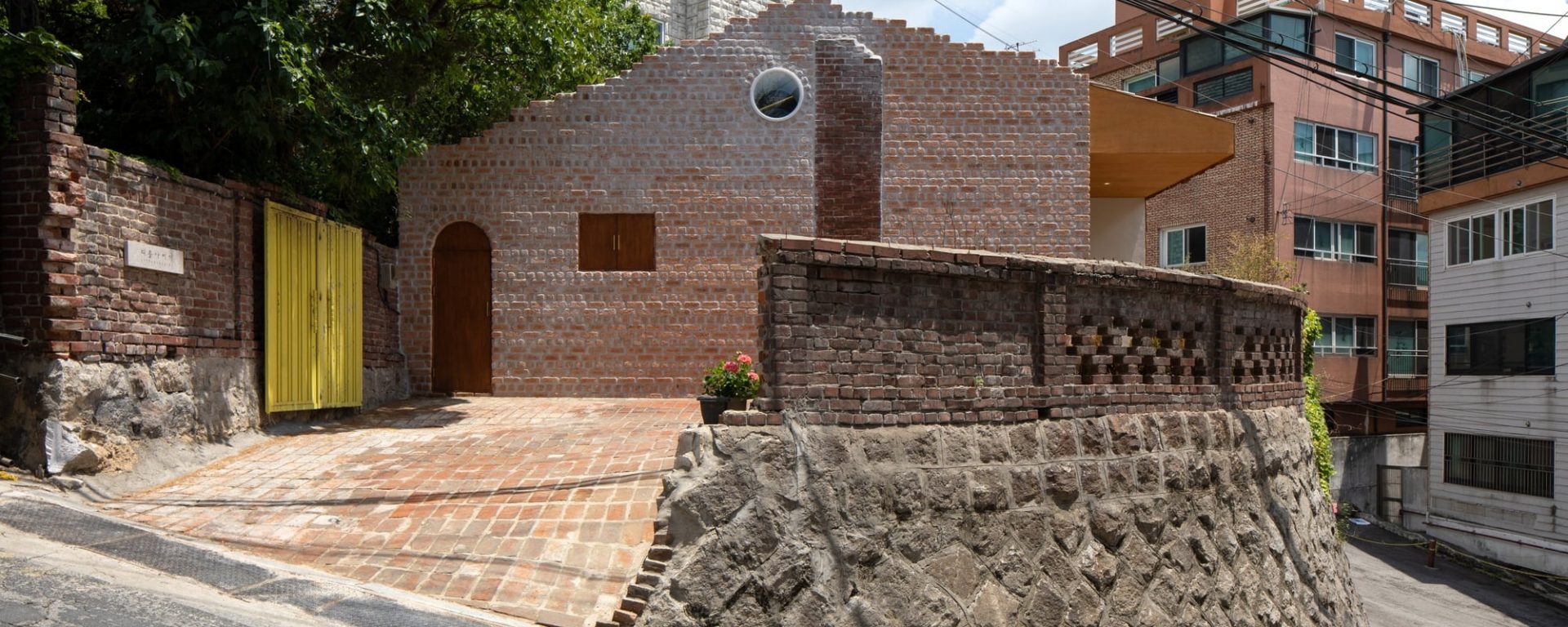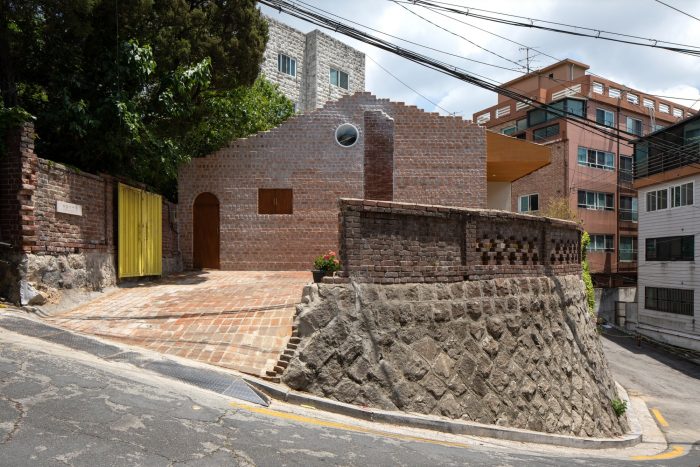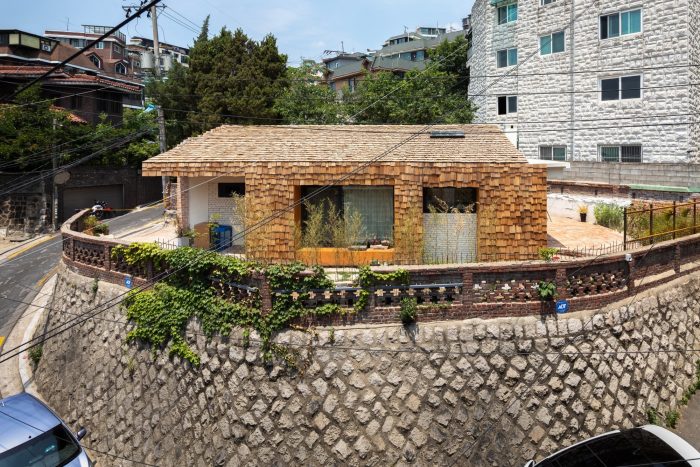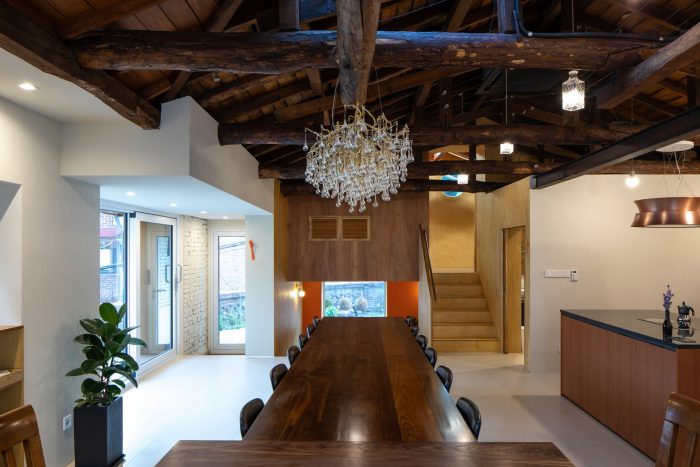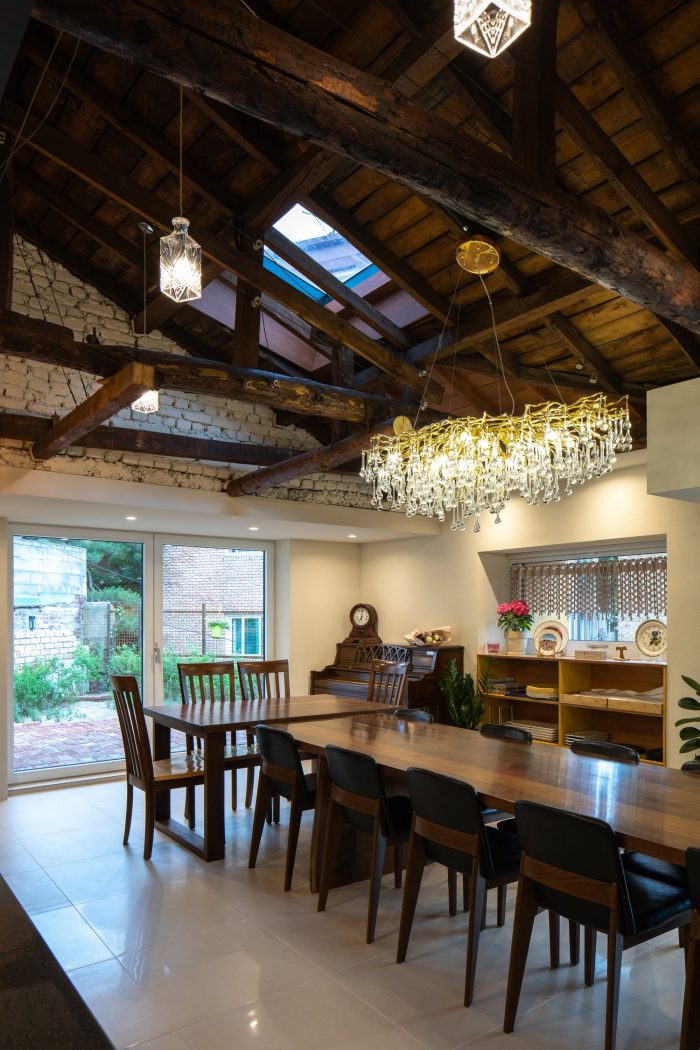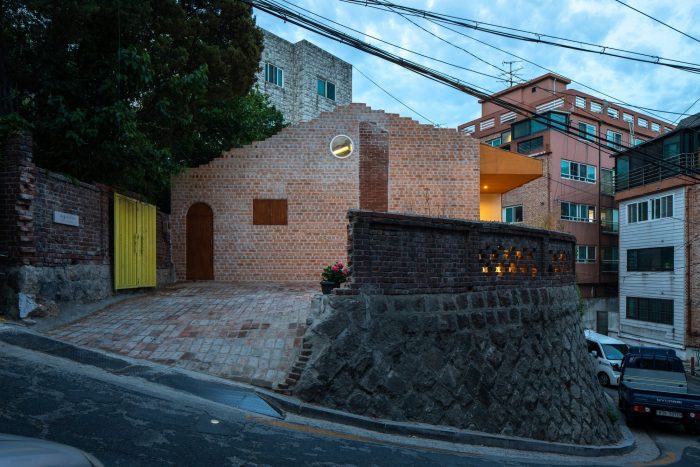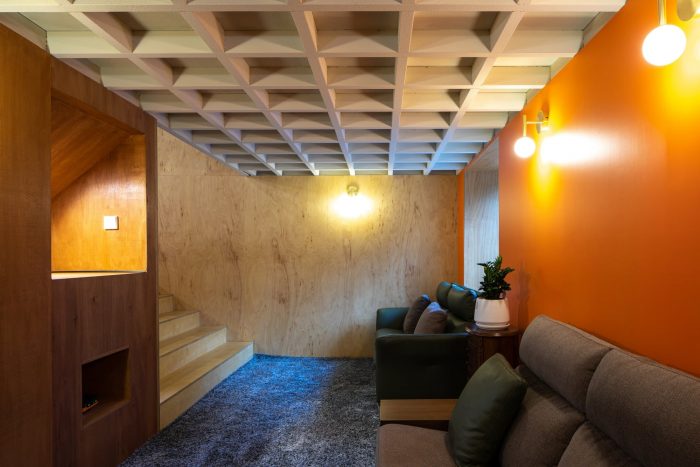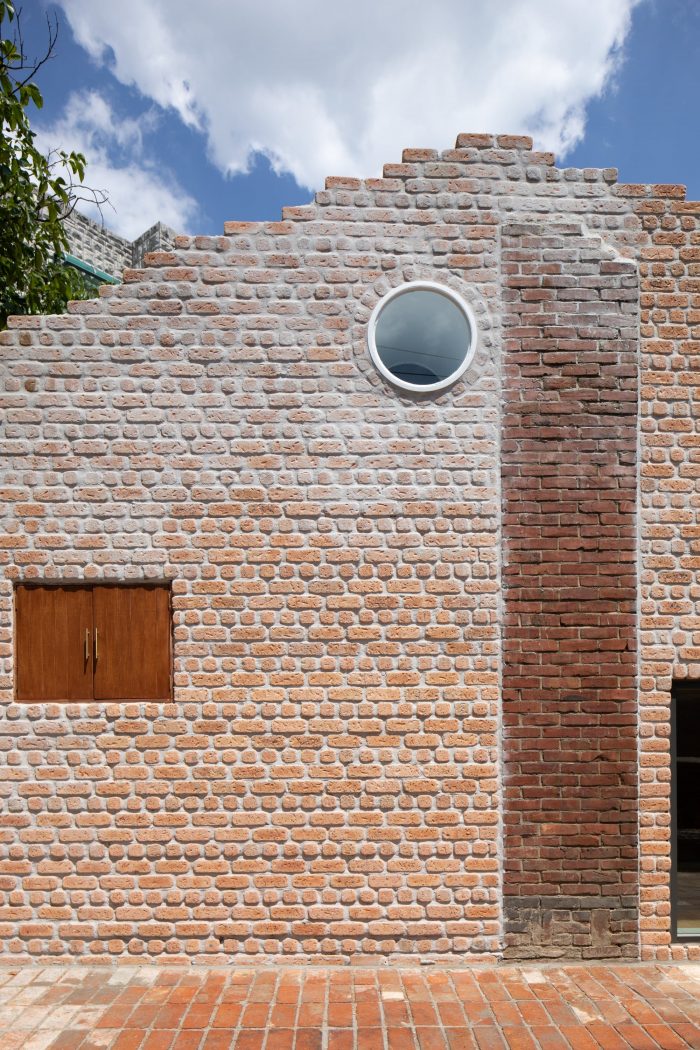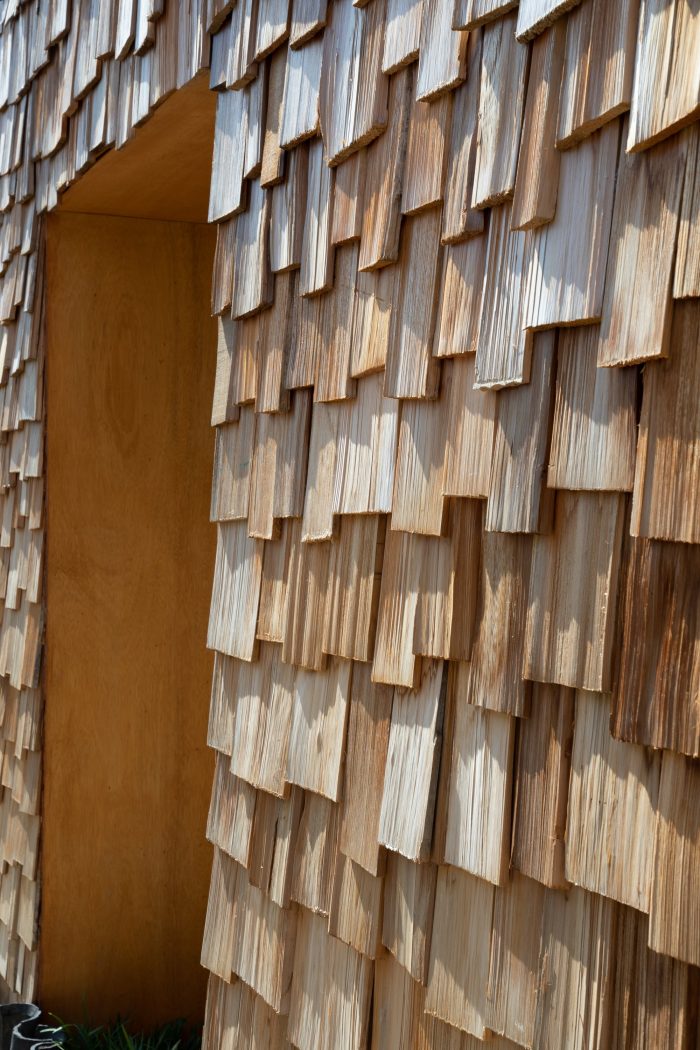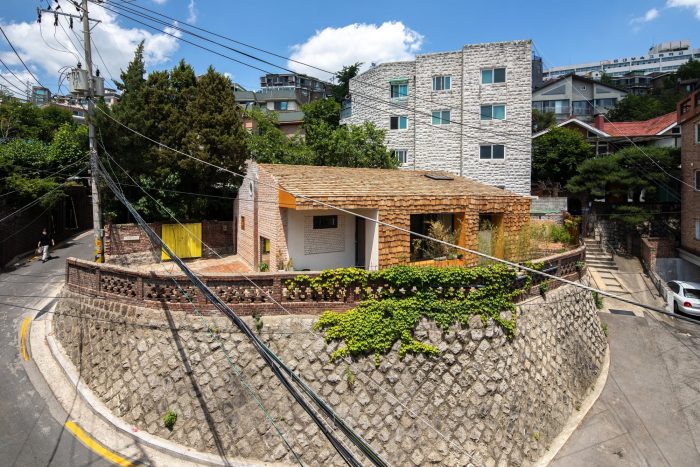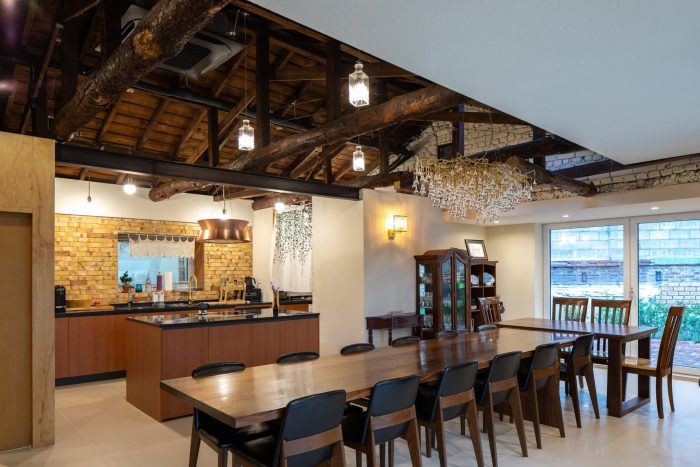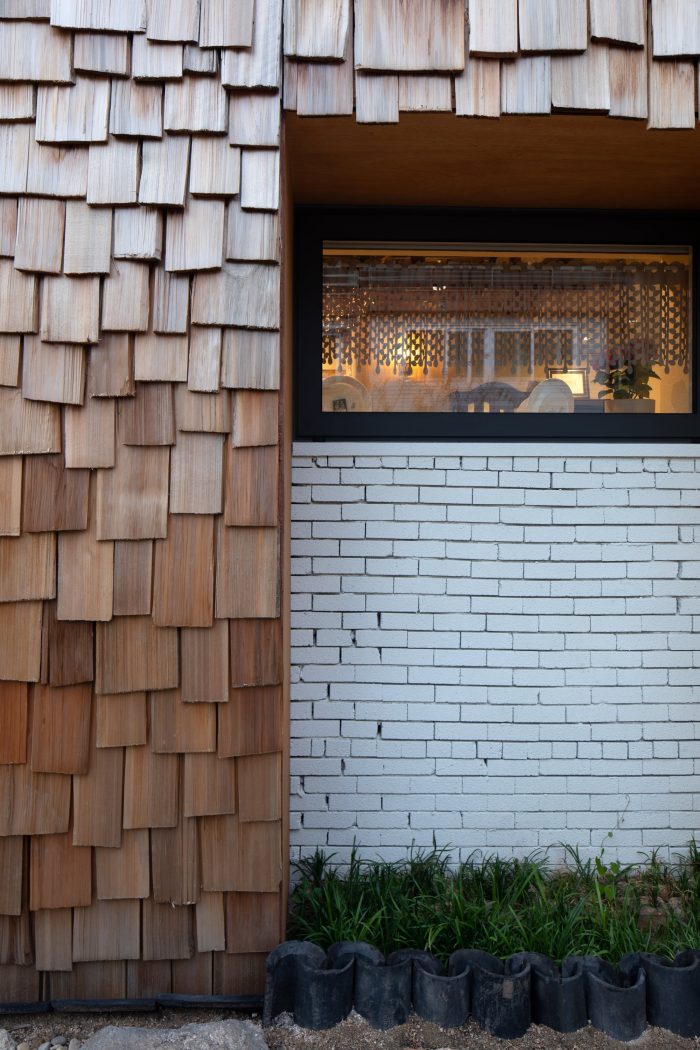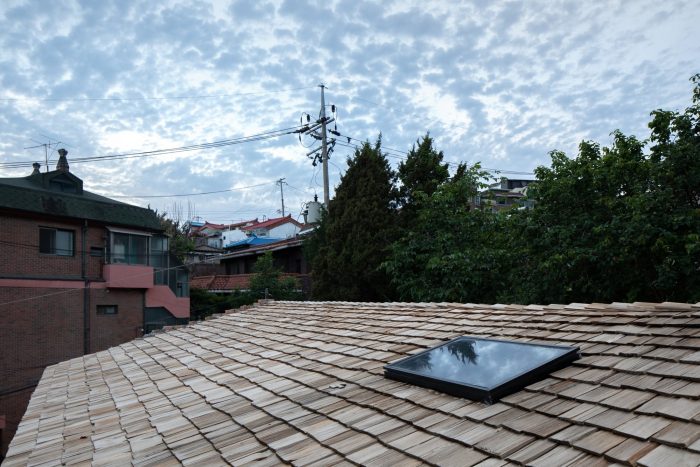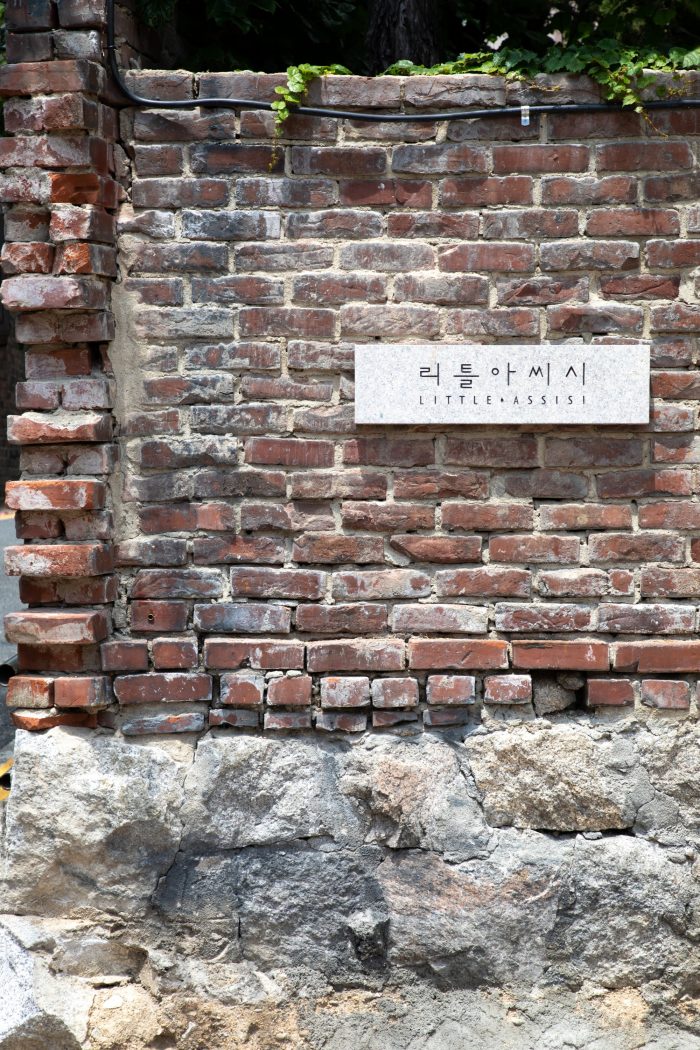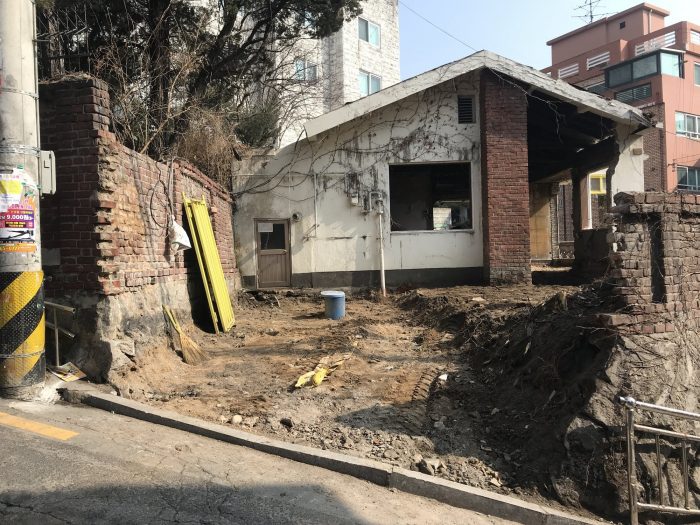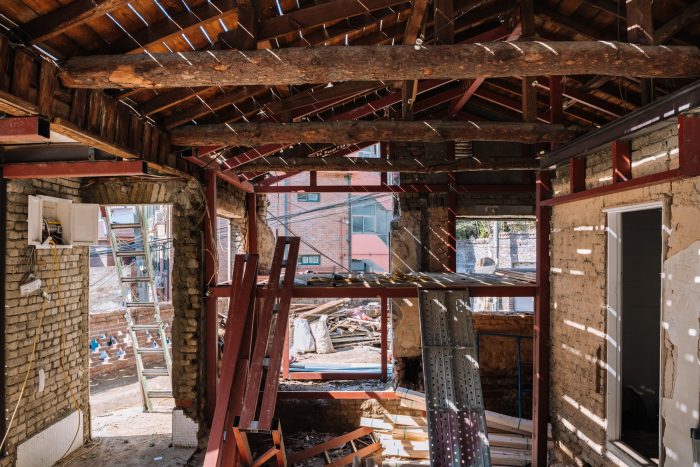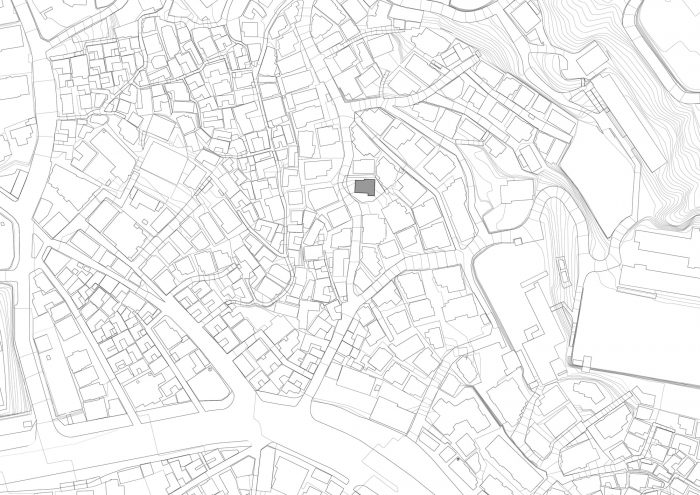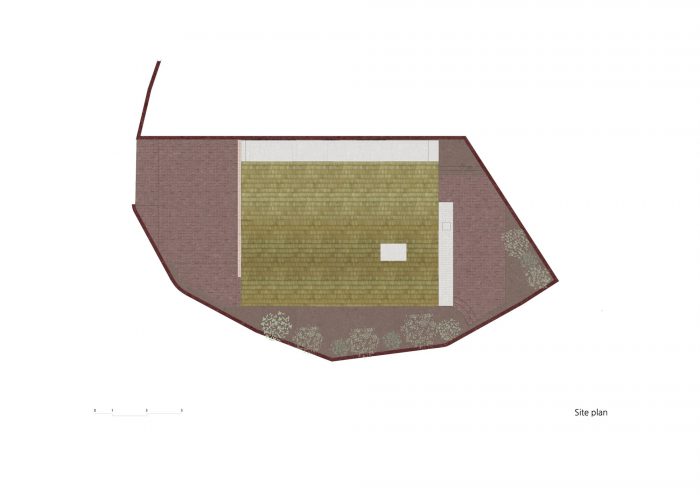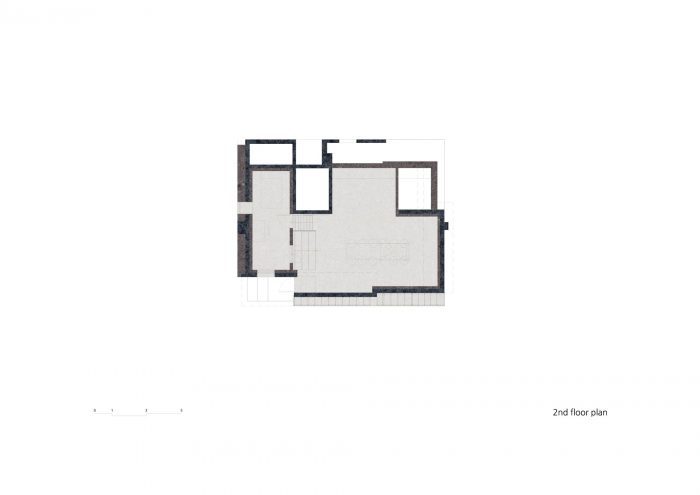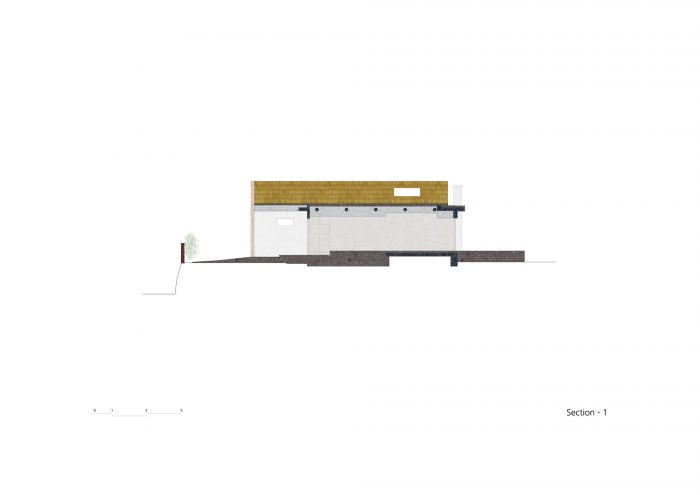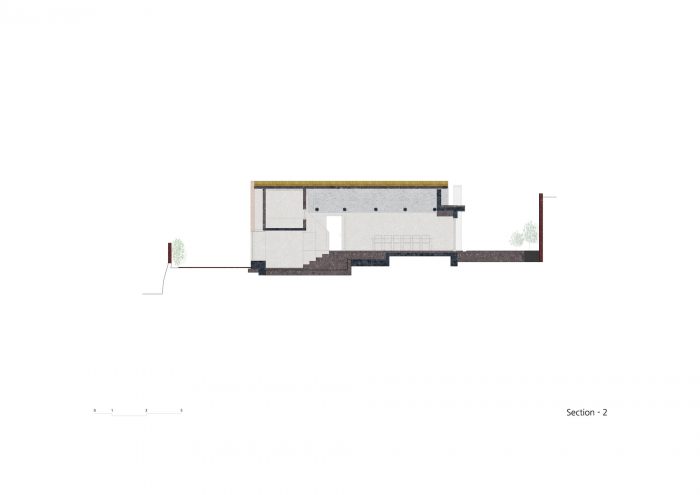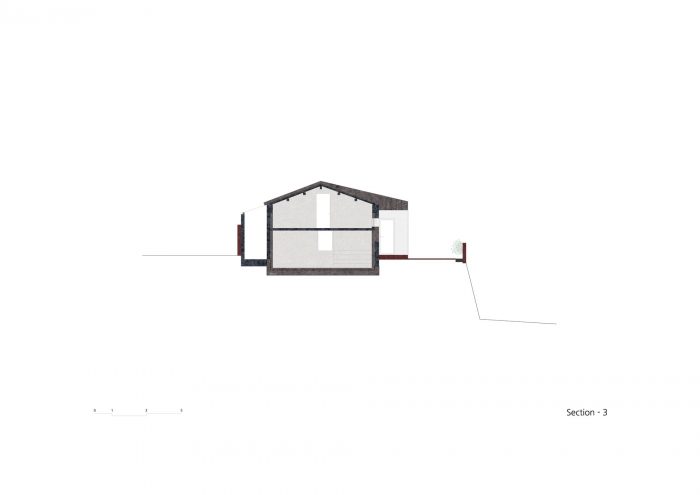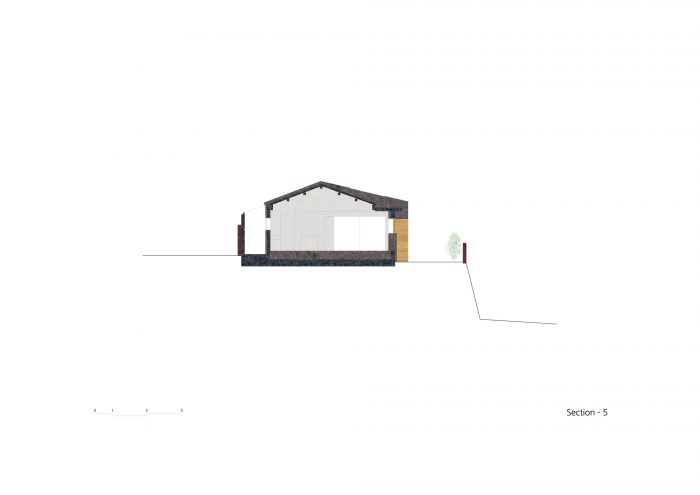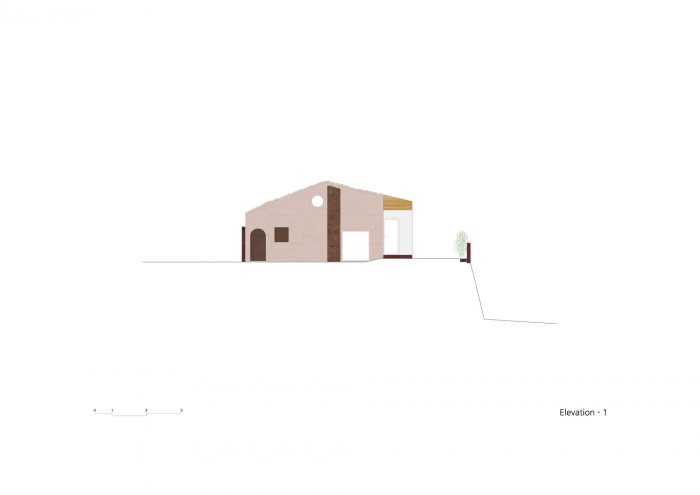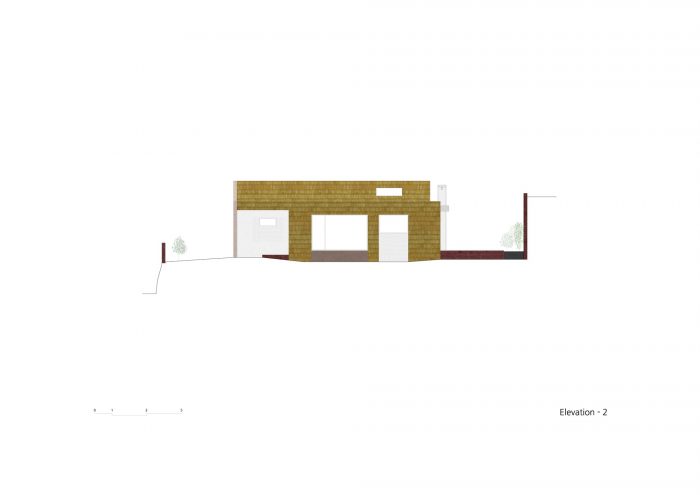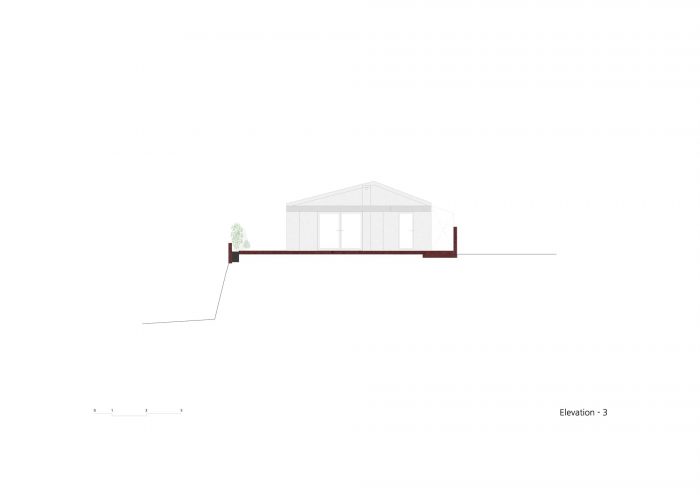城北洞共享厨房改造 – “阿西西 “是意大利中部地区的一个小镇,它以用鲜艳的建筑石块堆砌而成的建筑而闻名。几年前,楼主曾到过这个地方,想在改造城北洞村的一座老房子时,反思一下这次旅行的感受。小阿西西 “的异国印象,一个通过改造老房子而设计的共享厨房,就是从这个想法开始的。在与小巷相识的外墙中,选择了一种让人联想到阿西西的材料,以展示附近难以找到的新鲜设计。此外,所有的房间都被拆除,作为一个共享的厨房,设计成可以在一个宽阔的空间里享受烹饪过程和膳食。
Seongbuk-dong Share Kitchen Remodeling – ‘Assisi’ is a small town in the central area of Italy, and it is famous for buildings that were built by piling up bright colored building stones. The building owner visited this area a few years back and wanted to reflect on the feelings from the trip while remodeling an old house in the village of Seongbuk-dong. The exotic impression of ‘Little Assisi,’ a shared kitchen designed by remodeling an old house, began from this mind. In the façade acquainted with the alley, a material that reminds of Assisi was selected to show a fresh design that is hard to find nearby. In addition, all the rooms were demolished to use as a shared kitchen and designed so that the cooking process and meals can be enjoyed in a wide space.
小阿西西从一个老房子改造成一个共享厨房。它现在是城北洞的小意大利,是当地社区居民互动的基地。在共享厨房的主题下,城北洞的一个旧住宅空间被重建了。它的灵感来自于老建筑的时间性,用木板和砖块来表达时间的层次。现有房屋的结构和氛围被赋予了生命力,也被设计成与邻里和小巷相协调。同时,设计中也不忘植入新的形象。
Little Assisi transformed from an old house into a shared kitchen. It is now little Italy in Seongbuk-dong and a base of the local community for the residents to interact. Under the theme of a shared kitchen, an old residential space in Seongbuk-dong was reconstructed. It was inspired by the temporality of an old building and boards and bricks were constructed to express the layers of time. The structure and atmosphere of existing houses were vitalized and also designed to harmonize with the neighborhood and alley. At the same time, the design did not miss out on implanting new images.
时间的层次–城北洞是位于首尔要塞墙外东部的一个村庄,早在国家恢复独立时就被指定为风景区,该地区到处都建有许多别墅。这座改造后的房子也曾被用作平房,所以它位于山上,当年在这座房子下面有一个韩屋村,视野开阔,另一边的首尔堡垒墙的东面一目了然。 这座房子建于1960年,与山坡有4米多高的落差,用石块补充建造了造型门,是一座用砖栏杆和砖石砌成的白色房子。 客户对这座房子和城北洞的村庄有很深的感情,打算把它拆掉再建。然而,客户希望建立一个空间,与其他村子的人一起,使这所房子和城北洞向公众开放,并计划建立一个共享厨房。
Layers of Time – Seongbuk-dong is a village located in the east outside the Fortress Wall of Seoul and designated as a scenic area back when the nation restored independence and many cottages were built all over the area. This remodeled house also used to be used as a cottage, so it is located on a hill and back then, there was a Hanok village under this house and the visibility is opened to the point where the east of the Fortress Wall of Seoul on the other side stands out at one view. This house was built in 1960, and the difference in elevation of more than 4m height from the slope was supplemented with stonework to construct the stylobate, and it was a white house with brick rails and masonry. The client had a strong affection for this house and the village in Seongbuk-dong, and was planning to tear it down to build it again. However, the client wanted to build a space to join other village people and make this house and Seongbuk-dong to the public and planned a shared kitchen.
材料的层次 – 在设定建筑的计划之前,客户要求在前院和外墙反映意大利的阿西的情感。几年前,客户访问了意大利的一个小城市阿西西,它是一个被世界各地的人们用来朝圣的城市,也是阿西西圣方济各大教堂的所在地。这个城市是通过堆积红色石头来建造建筑的。在城北洞改造60多年前建造的房子时,总是要对现有材料和新材料的交汇点进行思考。
Layers of Materials – Before setting up the plan for the construction, the client requested to reflect on the sentiments of Asssi in Italy in the front yard and façade. A few years back, the client visited Assisi, a small city in Italy, and it is a city visited by people around the world for pilgrimage and also where The Basilica of Saint Francis of Assisi is located. This city was constructed by piling up red stones to build the buildings. Remodeling the house in Seongbuk-dong that was built over 60 years ago always involved contemplation about the point where existing materials and new materials converge.
建筑的关键材料和立面设计是通过两个方面来规划的。首先,从巷子里可以看到的侧立面使用了勃朗峰砖,以包含持续了很长时间的物理属性和深度情绪。一方面,客户希望感受到阿西西的氛围,所以与小巷相邻的房子的立面和院子都用砖块层层堆砌。房子周围的其他房子也是用砖和瓦完成的,所以它与小巷的气氛很和谐,在某种程度上,它创造了一个古老的未来,显示了与冥想的共存。
The key materials of the construction and the façade design were planned through two aspects. First, Mont Blanc bricks were used for the side façade visible from the alley to contain the physical property and mood of depth that continued over a long period. On the one hand, the client wanted to feel the atmosphere of Assisi, so the façade and yard of the house adjoined to the alley were built with layers of bricks. The other houses around the house are also finished with bricks and tiles, so it is harmonious with the atmosphere of the alley, and in a way, it creates an ancient future and shows the coexistence with a meditative attitude.
根据客户的反应,与小巷相邻的立面选择了类似意大利阿西西气氛的材料和结构,在设计上提供了新意。其次,从小巷的远处可以看到的立面使用了一种叫做雪松木的新材料(雪松木)。正如碎片协调和自然积累材料的时间一样,它被应用于新的外墙材料。相应地,正面和天花板都是根据以前的材料方法的设计,用雪松板建造的。由于房子位于山上,所以用石块和砖栏杆制成的造型板被一起使用,这样从面对房子的远处道路上很容易看到房子。
In response to the client’s response, materials and structures that resemble the atmosphere of Assisi in Italy were selected for the façade adjoined to the alley and provided newness in terms of the design. Second, a new material called cedar shake (cedar wood) was used for the façade visible from the distance of the alley. Just as fragments harmonize and naturally accumulate the time of the materials, it is applied to the new façade material. Accordingly, the front and the ceiling were all constructed with cedar shake based on the design of the previous material method. Since the house is located on a hill, the stylobate made of stonework and brick rails were used together so that the house is easily visible from the distant road facing the house.
空间的层次–这所房子在1960年是一间平房,但后来变成了房子,然后是摄影棚和花店。到了2020年,用途改为所有人的共享厨房。由于是作为共享厨房使用,院子的大门和墙壁被部分拆除,计划确保一个可以容纳两辆车的小巷和一个与小巷相连的共享院子。所有曾经是茶馆房间的空间都被拆除并补充,以尽可能地保证厨房和客厅的安全,并在一个空间内设计了一个客厅,也是一个带有跳楼结构的房间。为了强调共享厨房的属性,设计了一个壁式水槽和岛式水槽,并与中央客厅的长桌相连。在首尔城北洞,这个房子是作为复杂的时间和空间风格的集合体而建造的,它采用了日本的天花板结构,外墙部分采用了意大利的阿西西情绪,以及类似于韩国传统木瓦屋顶的杉木瓦片。
Layers of Space – This house was a cottage in 1960 but then turned into a house and then a photo studio and flower shop. By 2020, the purpose was changed into a shared kitchen for all. Since it is used as a shared kitchen, the gate of the yard and walls were partly demolished with the plan to secure an alley that can fit two cars and a shared yard connected to the alley. All the spaces that used to be rooms in a teahouse were demolished and supplemented to secure the kitchen and the living room as much as possible, and designed a living room and also a room with a skip floor structure within a single space. To emphasize the properties of a shared kitchen, a wall type sink and island sink were designed and connected to a long table in the central living room. In Seongbuk-dong, Seoul, this house was built as an assembly of complex time and space styles with a Japanese ceiling structure, a facade that partially adopted the Italian Assisi sentiment, and a cedar shake that resembles the traditional wood shingle roof in South Korea.
Architects: DRAWING WORKS
Area : 76 m²
Year : 2020
Photographs :Kim Jae-kyeong
Electrical And Mechanical Engineering : Drawing Works
Construction : Indesigen Plus
Design Team : Youngbae Kim, Jeongwhan Lee, Chansol Jeong
City : Seongbuk-gu
Country : South Korea

